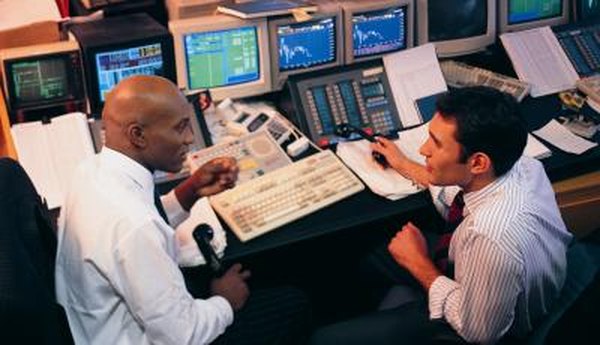Correlation of Treasuries With Stocks
Stock and bond markets normally have an inverse relationship.
Stockbyte/Stockbyte/Getty Images
Stock markets and bond markets usually go in opposite directions. During a bond market rally, the stock market drops. To make matters more confusing, the higher the price paid for a bond with a face value of $1,000, the lower its yield -- so in a bond market rally, yields drop. When the bond market crashes, yields rise. In a strong economy, there is great demand for money so interest rates rise in response.
Bond Prices Rise, Stock Prices Drop
When the economy is weak, companies post weak earnings and investors sell their stocks to put their money in conservative investments such as bonds and certificates of deposit. This causes bond prices to rise and stock prices to fall. When bond prices rise, yields drop. This makes money less expensive for borrowers and serves to help a weak economy recover as businesses borrow money to expand their operations.
Bond Prices Drop, Stocks Rally
A strong economy prompts the stock market to rally as companies start to post good earnings. When the stock market rallies, investors sell bonds and buy stocks, hoping for price appreciation at a higher percentage return than they are getting on their bonds. This drives the price of bonds down and moves yields higher.
The Case of the QEs
In the years after the credit crisis of 2008, the Federal Reserve began a series of quantitative easings, known as QE1, QE2 and QE3, as part of its open market operations designed to add money to the nation's money supply. This was done to spur an economic recovery and to keep interest rates low. Another term for QE is monitization of the debt because the Federal Reserve is buying back its own Treasury debt in the open market. When the Fed comes into the bond market buying significant amounts of bonds, the bond market rallies.
QE and the Stock Market
During the QEs, corporations were able to borrow money inexpensively, which helped them post strong profits, even though the economy was still weak. Strong corporate profits result in a stock market rally. Furthermore, institutional investors were able to buy stocks on margin at historically low rates, which allowed them to make greater profits on their investments. Institutional investor demand for stocks also helped the stock market to rally. During this period of time both the bond market and the stock market experienced rallies.
References
Writer Bio
Victoria Duff specializes in entrepreneurial subjects, drawing on her experience as an acclaimed start-up facilitator, venture catalyst and investor relations manager. Since 1995 she has written many articles for e-zines and was a regular columnist for "Digital Coast Reporter" and "Developments Magazine." She holds a Bachelor of Arts in public administration from the University of California at Berkeley.

